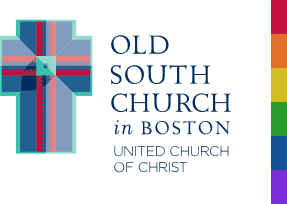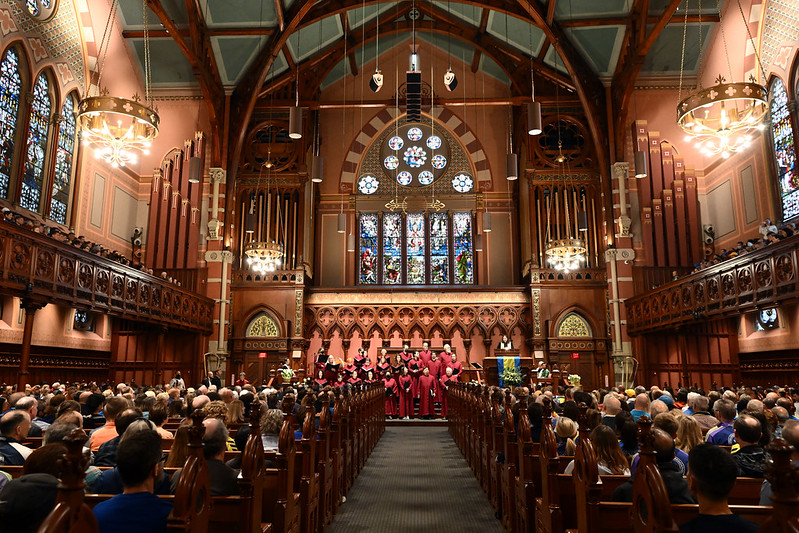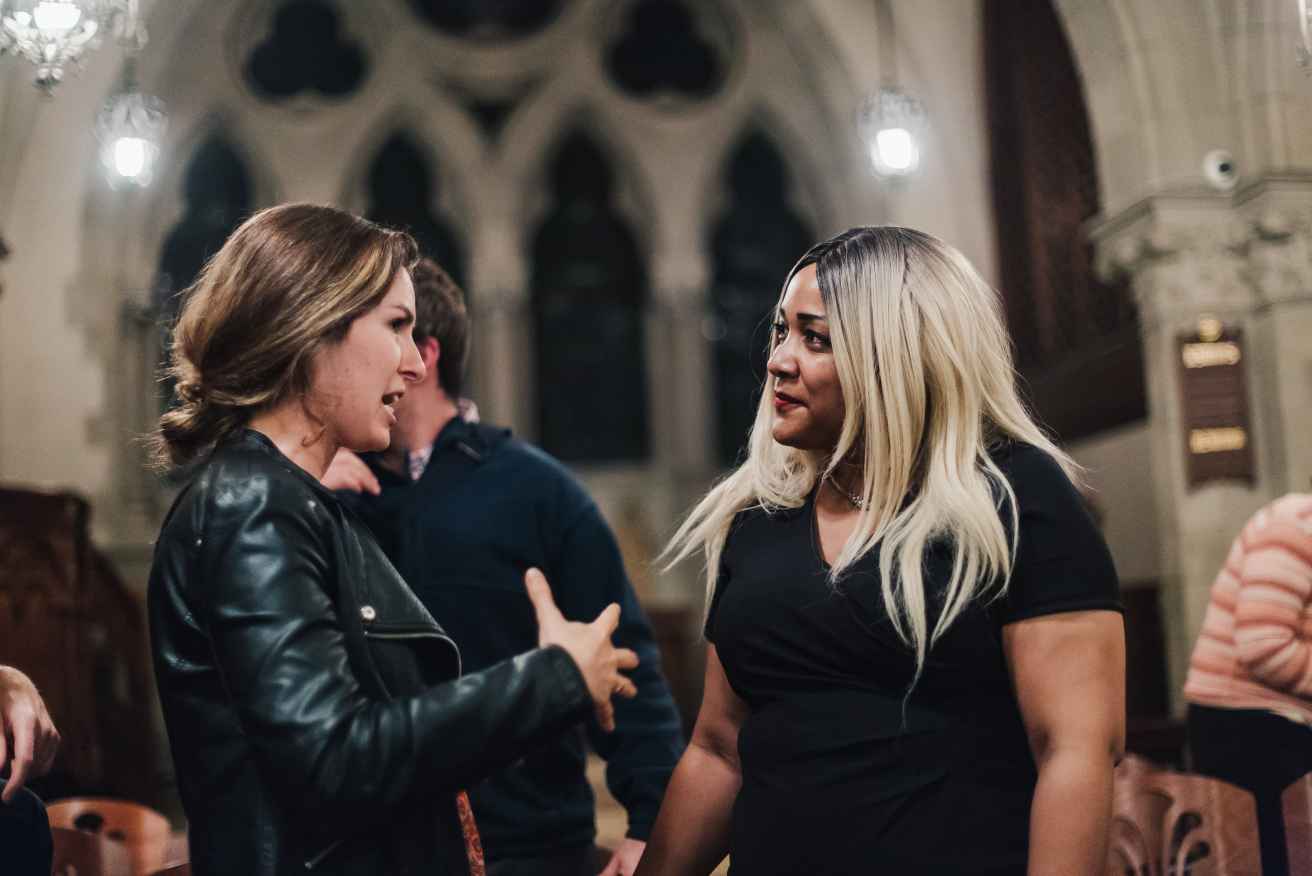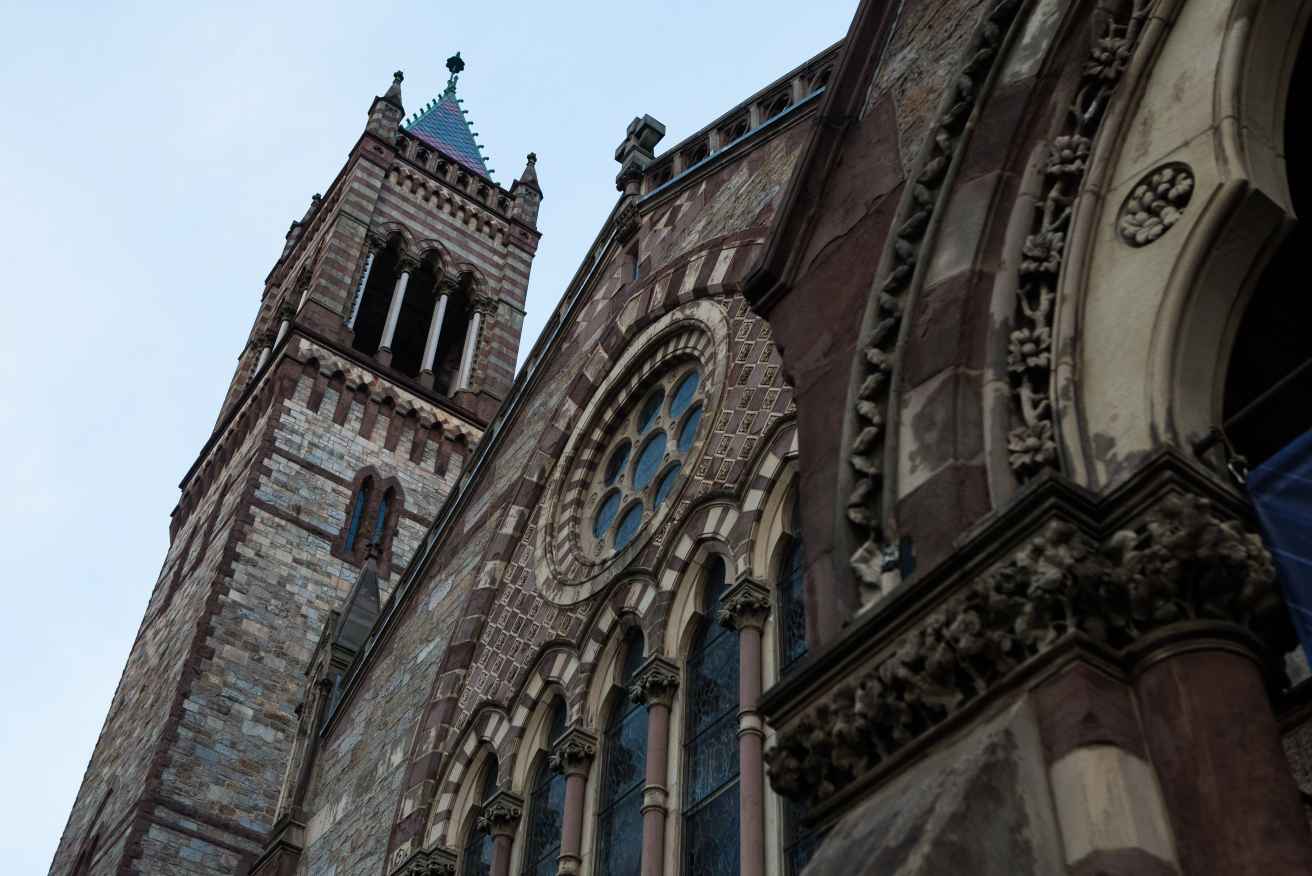Bethlehem. It’s the place on which we set our sights as we work our way through these days of Advent. We already know the story: it’s the place of destination for Mary and Joseph. It’s where the Child will be born. Bethlehem.
If we were to walk across the street from Old South Church to the Boylston Street side of Trinity Church, we would find there a statue of the late Phillips Brooks, Trinity’s Rector from 1869-1891. The statue depicts him in a clerical robe with the figure of Jesus standing behind him resting a hand on Brooks’ shoulder. Brooks was noted for his outstanding preaching and later went on to be Bishop of the Episcopal Diocese of Massachusetts. But for our purposes, he was the author of one of our most famous Christmas Hymns: O Little Town of Bethlehem.
Although certainly made famous by Jesus’ birth and then, later, by Brooks’ hymn, Bethlehem was really not much of a place back in that day. Some have called it a town that time forgot; perhaps even a first century Lake Wobegon of Garrison Keillor fame. Indeed, it did have some history. David was born there and it was there he was crowned king. There was also a feeling that one day the Messiah might be born there. But, under the crushing boot of the Roman Empire, who remembers all those things dating back hundreds of years? Our focus now is on Joseph and Mary slowly and laboriously making their way toward Joseph’s family’s hometown, by order of the Roman Emperor, so that a census might be taken.
In our day a great deal of hype surrounds the Christmas season. Except for our Churches, Advent, a time of waiting, preparation and reflection on the coming of the Child, is largely ignored. We hear carols just after the Halloween candy has been distributed and Black Friday (now even Thanksgiving Day afternoon!) tempts us with bargains we cannot refuse. Then we actually come to Christmas itself. We celebrate with great joy – as well we should. We hear again voices of the heavenly choir singing from the starry sky; of shepherds heeding the voice of an angel urging them to go and see what had come to pass; of Magi arriving from the east with precious gifts. We have decorations that brighten our homes and our streets. It is the season of goodwill. Gifts are exchanged. There is much feasting. All proper and good!
And yet ... and yet, even in the midst of all of our festivities, might we somehow miss the simplicity that is at the heart of the story? The Gospel accounts of the birth were written some 85-90 years or more after the event. There were no eyewitnesses. The purported writers, Mathew and Luke, had the hindsight of Jesus’ life, ministry, death and resurrection. Perhaps they wanted all who would later read their accounts to celebrate the Birth with great joy; that the Birth was as glorious as the Resurrection. Why not!
Yet the image that will not leave me is that of Joseph leading a very pregnant Mary, who is riding on the back of a lowly donkey, toward their destination: Bethlehem. Phillips Brooks’ hymn sets the tone:
O little Town of Bethlehem, how still we see you lie!
Above your deep and dreamless sleep the silent stars go by;
Bethlehem. A town that time had largely forgotten. The couple, upon arriving, was certainly not met by dignitaries, the town magistrate or, for that matter, anyone else. They found lodging in a stall at the back of an inn. They were away from family and friends. We can only speculate as to whether or not the inn keeper brought them some bread and hot broth to ward off the chill of the night.
You see, when you strip everything away we might just find the core of our celebration: A Child who entered the world riding, in his mother’s womb, on the back of a donkey; a man who would make a journey to his death, on Palm Sunday, on the back of a donkey. We discover one for whom there was no room at the inn; and as a man whose teachings about the kingdom of God, with its radical hospitality and inclusion, left him no room in the religious and political establishment of his day. Let’s press it further: the joyous ‘crowning’ at birth gave way, some 30 years later, to a crown of thorns.
I, for one, who delights in the grand celebrative dimensions of Christmas, need to be sure I pause and reflect on the stark, essential simplicity of the story. In an out of the way town, in a lonely and lowly setting, the story of our faith takes shape - indeed the story of our very lives. Brooks again:
Yet in your dark streets shines an everlasting light,
The hopes and fears of all the years are met in you tonight.
If we were so bold as to suggest that Bethlehem can also be a metaphor for our lives, with its struggles, pains, fears, losses and disappointments, then it is in those dark places that an everlasting light can shine. And if we can be bolder still and take Bethlehem as a metaphor for the circumstances of the poor, the homeless and all those whom society marginalizes, then it is into those dark places that the Child comes.
This simple story is not, at its heart, a sentimental story about a little baby. In its stark simplicity it is a radical story of how God acts to set our comfortable world on its ear and challenges us, as disciples, to both envision and then work for a future of hope and justice for all of God’s people.
Bethlehem. A manger. A donkey. Joseph. Mary. A Child. It’s quite a story! In the midst of all of our wonderful festivities, let’s not miss its radical and life changing simplicity. Brooks yet again:
O come to us, abide with us, our Lord Emmanuel!







